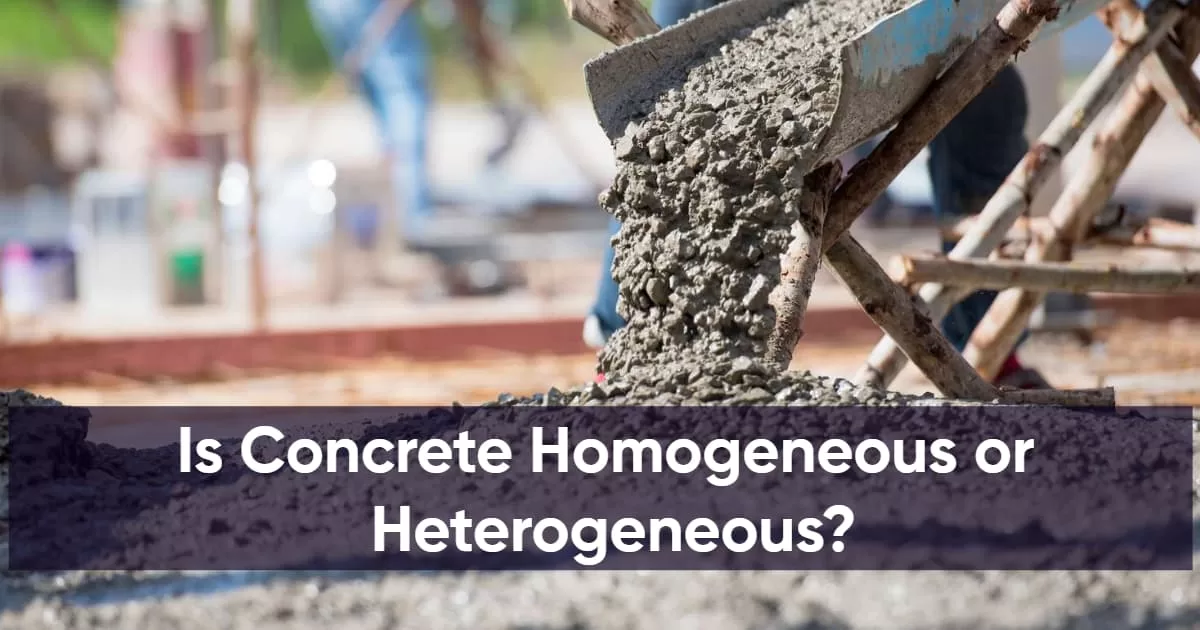Concrete is a heterogeneous mixture. The reason is that when observed closely, one can identify the diverse components of concrete, such as aggregates, cement, and water, which do not blend to form a uniform composition.
This comprehensive guide dives into the intricate world of concrete, from its basic composition to specialized types.
Whether you’re a civil engineering student, a construction professional, or simply curious, you’ll walk away with a deeper understanding of what makes concrete so versatile and essential in modern construction.
Table of Contents
What type of matter is concrete?
Concrete is a composite material. It’s not an element, nor a single compound. Composed mainly of water, cement, and aggregates like sand, gravel, or crushed stone, concrete is an example of a complex system in the realm of materials science. Being part of numerous construction projects, from homes to bridges, its characteristics can vary widely based on the mix and other factors.
What are Mixtures?
In construction, mixtures often manifest as a blend of raw materials used to create a final product, such as concrete, asphalt, or plaster. For instance, concrete is a classic example of a construction mixture, where cement, water, sand, and aggregates are combined. The end product, while a cohesive whole, retains the distinct identities of its individual components.
Homogeneous mixtures in construction entail a uniform distribution of their components throughout, like a well-mixed paint, whereas heterogeneous mixtures, like concrete, have discernible, varied constituents.
| Type of Mixture | Definition | Examples |
| Homogeneous | A mixture with uniform composition. | Alloys, air |
| Heterogeneous | A mixture with varying composition. | Granite, concrete |
What is a Homogeneous Mixture?
A homogeneous mixture is one where all components are uniformly distributed. When you look at a small section of a homogeneous mixture, it’s indistinguishable from any other section of the same size. Think of air as an example. It has multiple gases like nitrogen and oxygen, but in any given breath, the proportions remain roughly the same.
In construction, a common example is the alloy used in steel reinforcement bars. These bars are made from a mix of iron, carbon, and other elements, but you can’t tell these apart just by looking at the bar.
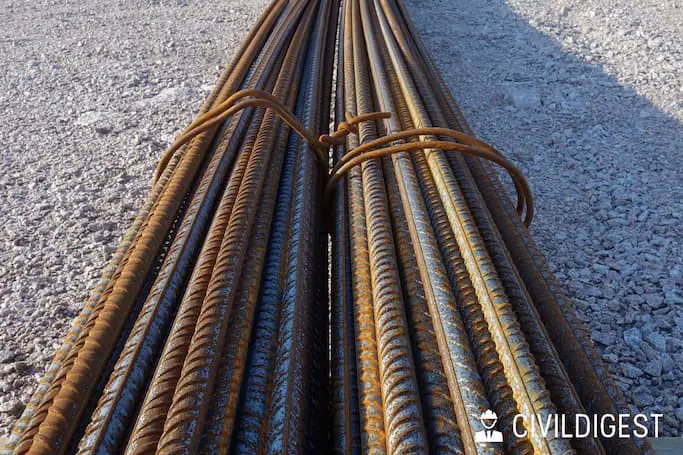
What is a Heterogeneous Mixture?
A heterogeneous mixture is one where the individual components are not uniformly distributed. Imagine a salad: it contains lettuce, tomatoes, onions, and maybe some croutons. When you grab a forkful, it’s unlikely you’ll get an even distribution of these ingredients each time.
In the construction context, consider concrete. In its wet form, concrete is a mixture of water, cement, and aggregates. When you look closely, you can see the individual grains of sand, lumps of cement, and bits of gravel or crushed stone. That’s the essence of a heterogeneous mixture: it’s not the same throughout.
| Components | Visible in Concrete | Role in Mixture |
| Water | No | Activates cement, aids in mixing |
| Cement | No | Binds materials |
| Aggregates | Yes | Adds strength |
Why is concrete considered homogeneous?
Here’s where things get a bit tricky. While concrete is a heterogeneous mixture in its raw form, once it sets, it often behaves like a homogeneous material under certain conditions. Engineers sometimes regard it as homogeneous for analytical and design purposes. This is especially true when discussing concrete at a macroscopic level, where variations in its components don’t significantly impact its overall behavior.
For instance, when calculating the load-bearing capacity of a concrete column, engineers often treat it as a homogeneous material. Such an approach simplifies the equations, making it easier to predict how the concrete will behave under load.
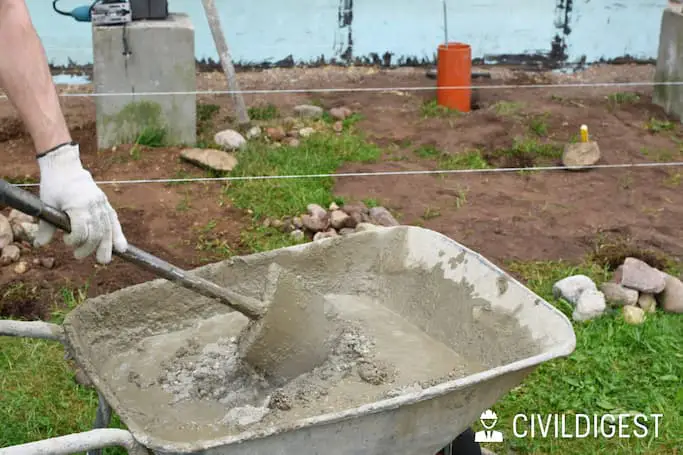
What does heterogeneous mean in concrete?
While it’s convenient to treat concrete as homogeneous in many engineering scenarios, the truth is, concrete remains a heterogeneous mixture at a microscopic level. As we’ve established, it’s made of water, cement, and aggregates. These components don’t blend into a single, uniform material.
To clarify this point, let’s take the example of a concrete slab. If you were to break this slab and observe it closely, you would see various particles and phases. Some regions might be richer in cement, while others could have more aggregate. These differences can influence attributes like strength, durability, and how the concrete reacts to environmental factors.
- Strength: Variability in composition affects load-bearing capacity.
- Durability: Differences in materials can influence resistance to weathering.
- Reactivity: Some parts may be more susceptible to chemical attacks than others.
What’s In Concrete?
At its core, concrete is a straightforward mixture. The basic ingredients—cement, water, and aggregates—undergo complex interactions. The result is a material with surprising versatility. Here’s a breakdown of what’s usually in standard concrete:
| Ingredient | Function | Percentage by Weight |
| Cement | Binder | 10-15% |
| Water | Activator for Cement | 14-21% |
| Aggregates | Structure | 60-75% |
Different Types of Concrete Mixtures
You’d be amazed at the different kinds of concrete mixes available today. Each variant serves a specific need in construction, be it strength, durability, or aesthetic appeal. Let’s dive into some of the most common types:
Normal Strength Concrete
Normal strength concrete is your everyday, go-to material. This type primarily consists of the basic concrete ingredients: cement, water, and aggregates. It’s widely used in residential buildings, pavements, and simple structural elements.
Calculation Example: Mix Ratio
Let’s say you have a mix ratio of 1:2:4 for cement, sand, and gravel respectively. If you need to prepare 100 kg of concrete, how do you divide these ingredients?
Cement: 1/(1+2+4)×100=14.28 kg
Sand: 2/(1+2+4)×100=28.57 kg
Gravel: 4/(1+2+4)×100=57.14kg
- Identify the mix ratio: 1:2:4
- Calculate the weight for each component based on the total weight.
- Mix the components together.
Plain or Ordinary Concrete
Plain or ordinary concrete lacks reinforcement but serves well in applications that don’t require high tensile strength. Think of garden paths, residential driveways, and other non-critical structures.
Reinforced Concrete
Reinforced concrete steps it up a notch. Here, steel bars or mesh are added to the traditional concrete mix. This increases the material’s tensile strength, making it suitable for taller structures and heavy-load-bearing walls.
Real-World Example
For a multi-story car park. The floors need to support dozens of cars, each weighing about 1.5 tons. Reinforced concrete is the perfect choice here.
- Increased tensile strength due to steel reinforcement.
- Capable of supporting heavy loads.
- Widely used in multi-story structures.
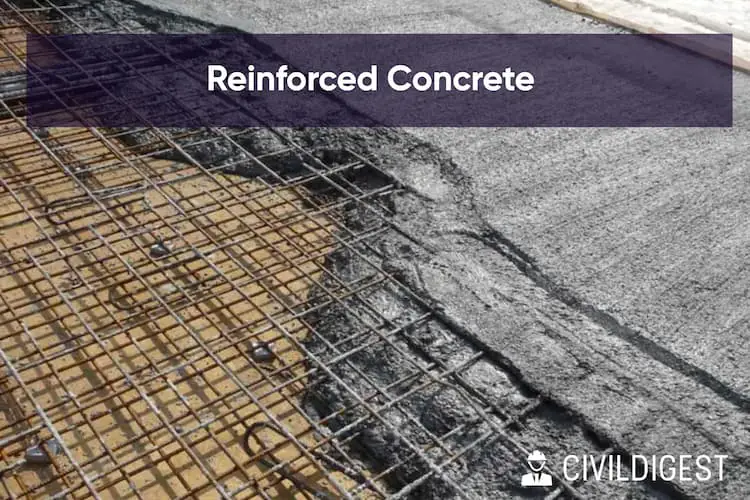
Prestressed Concrete
In prestressed concrete, steel wires are tensioned before pouring the concrete. Once the concrete hardens, the tension is released. The resulting compression improves the material’s ability to handle tensile forces. This is perfect for long-span structures like bridges or large auditoriums.
- Bridges
- Large roofs
- Railway sleepers
Precast Concrete
Precast concrete revolutionizes construction timelines. Unlike traditional methods, precast components are molded off-site and then transported for assembly. This approach saves time and ensures high-quality, consistent elements.
Lightweight Concrete
Lightweight concrete is the go-to for projects needing less weight but maintaining decent strength. It’s ideal for low-load-bearing walls and insulating applications.
High-Density Concrete
When you need a material that can take a lot of hits, think high-density concrete. Common in nuclear facilities and underwater structures, its density helps it absorb and deflect radiation and high-pressure forces.
Real-World Example
Consider a nuclear power plant. The walls around the reactor must be incredibly dense to contain radiation. High-density concrete is a match made in engineering heaven.
- Highly resistant to radiation and pressure.
- Commonly used in specialized structures like nuclear plants.
- Expensive but essential for safety.
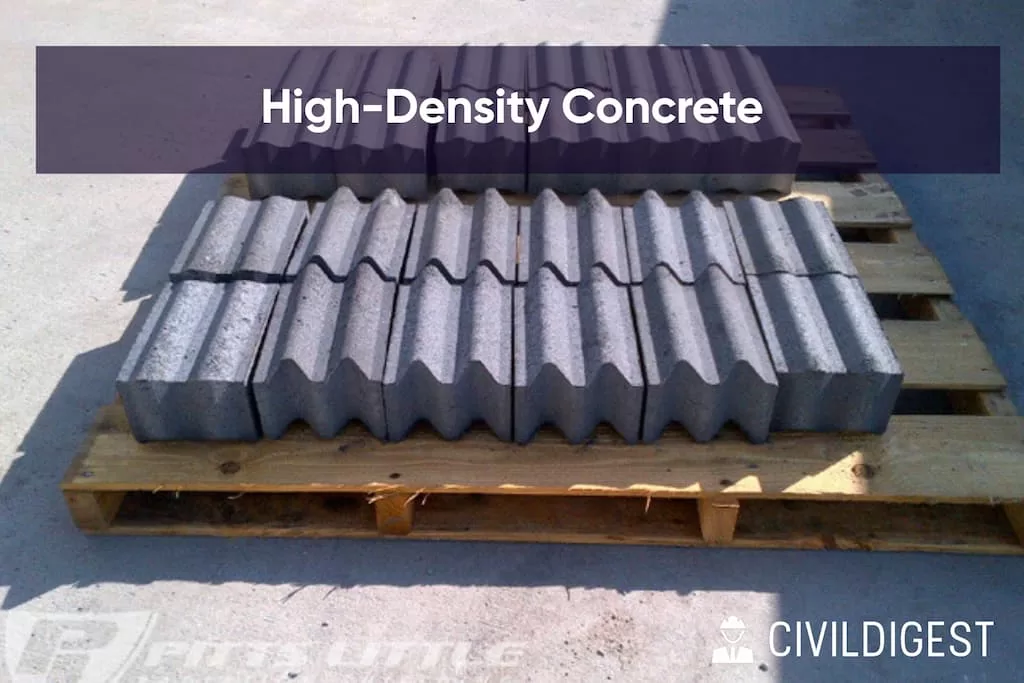
Stamped Concrete
Stamped concrete offers an aesthetic flair. Patterns or textures are stamped onto freshly poured concrete, making it look like brick, stone, or even wood while maintaining structural integrity.
- Wood plank
- Flagstone
- Cobblestone
- Brick
Air-Entrained Concrete
Air-entrained concrete offers a unique solution for freeze-thaw cycles. Tiny air bubbles are incorporated, making the concrete more resistant to ice-induced cracking.
Read More: Air Entrainment
Ready-Mix Concrete
Ready-mix concrete is the go-to for saving time and labor costs. Delivered to your site pre-mixed, you only need to pour it into forms.
| Pros | Cons |
| Time-saving | Short working time |
| High-quality mix | Transportation limits |

Self-Consolidated Concrete
Self-consolidated concrete is the silent hero in tight spaces. It flows into every nook and cranny, eliminating the need for mechanical consolidation.
Use-Case Example
Think of a complex structure with intricate design elements. Traditional concrete would require vibrators to eliminate air pockets. Self-consolidated concrete doesn’t.
- Ideal for intricate structures.
- No need for mechanical vibration.
- Flows and fills all gaps.
Volumetric Concrete
Volumetric concrete is for those who want a custom blend on-site. The raw materials are mixed in precise ratios in a specialized truck.
Decorative Concrete
Decorative concrete is the artist in the concrete family. It’s not just functional; it’s also aesthetically pleasing. Great for patios and interior floors.
- Stamped
- Stained
- Polished
- Overlays
Polymer Concrete
Polymer concrete shifts the traditional recipe. By replacing cement with polymer resins, it gains higher strength and durability.
Rapid-Set Concrete
Rapid-Set Concrete is the sprinter. It sets in about 15 to 45 minutes, making it ideal for urgent repairs.
| Pros | Cons |
| Quick Setting | Less Working Time |
| Immediate Load Bearing | Higher Cost |
Smart Concrete
Smart concrete is like regular concrete with a Ph.D. It contains sensors that monitor stresses and strains, perfect for advanced projects like bridges or tall buildings.
Real-World Example
Imagine the Golden Gate Bridge fitted with smart concrete sensors. These sensors could provide real-time data on structural integrity, offering a new era of safety.
- Real-time stress monitoring.
- Data-driven maintenance.
- Enhanced safety measures.

Pervious Concrete
Previous concrete is the eco-friendly cousin in the concrete family. It allows water to pass through, reducing runoff and aiding groundwater recharge.
| Advantages | Disadvantages |
| Reduces water runoff | Lower strength |
| Good for groundwater | Higher cost |
Vacuum Concrete
Vacuum concrete uses a vacuum pump to remove air bubbles. The result? More strength and durability, less shrinkage.
Pumped Concrete
Pumped concrete solves the problem of transporting concrete in hard-to-reach spots. Think of skyscrapers or tunnels.
- Boom Pump
- Line Pump
- Truck-Mounted Pump
Limecrete
Limecrete replaces cement with lime. Why? Better breathability, making it great for historic building restoration.
| Limecrete | Regular Concrete |
| High breathability | Low breathability |
| Lower strength | Higher strength |
| Eco-friendly | Less eco-friendly |
Roll Compacted Concrete
Roll Compacted Concrete (RCC) is your go-to for heavy-duty use like dams and high-traffic roads. It’s laid down with asphalt pavers and then compacted using rollers.
Calculation for RCC Thickness
To calculate the required RCC thickness, use the formula:
Thickness=Load/Strength Factor
Suppose the load is 40 kN/m^2 and the strength factor is 0.2, then the thickness would be
40/0.2=200 mm
Glass Concrete
Glass concrete is a stylish, yet practical choice. It uses recycled glass as an aggregate, blending aesthetics with function.
Benefits of Glass Concrete
- High aesthetic appeal
- Recycles waste glass
- Good for interior designs
Asphalt Concrete
Asphalt Concrete is predominantly used for road construction. It’s a mixture of asphalt and mineral aggregate, and it’s incredibly durable.
| Type | Use |
| Dense-Graded | Most Roads |
| Stone Matrix | High Durability |
| Open-Graded | Water Drainage |
Shotcrete Concrete
Shotcrete is concrete that’s not laid down; it’s shot from a hose at high velocity onto a surface. Commonly used in tunnel construction and slope stabilization, it offers unique advantages.
High-Strength Concrete
When you need something that can take a beating, high-strength concrete is the answer. With a compressive strength of over 6,000 psi, it’s used in high-rise buildings and bridges.
How to Calculate High-Strength Concrete Mix
Let’s say you have to achieve a strength of 7000 psi. A typical mix could be:
Cement: 600 lb
Water: 240 lb
Sand: 1250 lb
Coarse aggregate: 1875 lb
Mix Ratio = Cement:Water:Sand: Aggregate = 600:240:1250:1875
- Cement: 600 lb
- Water: 240 lb
- Sand: 1250 lb
- Coarse aggregate: 1875 lb
High-Performance Concrete
High-performance concrete isn’t just about strength. It also focuses on durability, workability, and finish. It’s the multipurpose option you didn’t know you needed.
| Attribute | Description |
| Strength | Above 6,000 psi |
| Durability | Resistant to weather |
| Workability | Easy to place and finish |

What is the difference between heterogeneous and homogeneous?
The distinction between heterogeneous and homogeneous concrete boils down to uniformity. Homogeneous concrete has a consistent composition throughout. Heterogeneous concrete? Not so much.
| Type | Uniformity | Examples |
| Homogeneous | Uniform throughout | Normal Strength Concrete |
| Heterogeneous | Varied composition | Stamped Concrete |
Which is better: homogeneous or heterogeneous?
“Better” is a tricky term here. The best type of concrete depends on the job at hand. Need uniform strength? Go homogeneous. Looking for a specific texture or finish? Heterogeneous might be your best bet.
| Type | Pros | Cons |
| Homogeneous | Uniform strength, easier quality control | Less versatility in texture |
| Heterogeneous | Visual appeal, specialized functions | Quality control can be challenging |
In the end, your project’s needs dictate which type is superior. Keep your specific requirements in mind and choose wisely.
Conclusion
Whether homogeneous or heterogeneous, each type of concrete serves unique purposes in the world of civil engineering. We’ve explored the fundamentals, breaking down the constituents of concrete, and dove deep into various types of specialized concrete—each with its own set of characteristics, advantages, and limitations.
Choosing the right type of concrete is not just a matter of strength or longevity; it’s about aligning the material’s properties with your specific project needs. It’s not a one-size-fits-all situation. Whether you’re an engineering student, a DIY enthusiast, or a seasoned professional, understanding these nuances can guide you toward making informed, efficient decisions in your next project.
